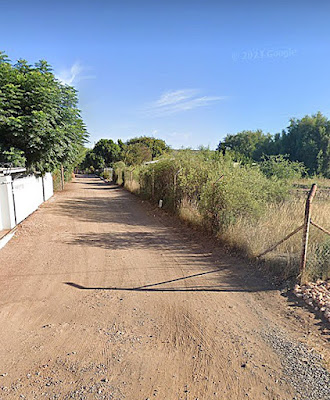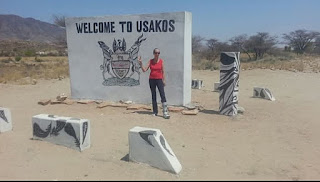Friendship is one of life’s most cherished
possessions. When it perseveres through the test of time, through decades of
development, transformation, maturation, and life’s unforeseen challenges, it
becomes something truly remarkable. A seventy-year friendship goes beyond
shared memories; it is a living timeline of two individuals continually choosing each other.
Our journey started in our childhood on the banks of the Orange River in *Prieska, a small town in the Northern Cape, where our parents both owned modest smallholdings. Despite our economic hardships, we were enriched by love, compassion, and care – the things that truly matter!
Undaunted by the dangers of the mighty Orange River, we transformed the forest ***‘Die Bos” adjacent to the river, and the dusty streets of Prieska into our playground. As two young ponytailed girls, we attended classes at Prieska Primary School and later Prieska High School, worshipped at the same Dutch Reformed Church, and shopped at the same local stores.
The town was a close-knit community where everyone was familiar with each other's affairs and communicated in the same language, i.e., Afrikaans. Prieska offered limited entertainment options for children, but we were content with each other's company and the available amenities. English, of course, was a foreign language to us.
One of the clearest memories that comes to mind is the long, dusty walks to the memorial in Prieska. **Die Koppie Nature Reserve, nestled in the semi-arid heart of the Northern Cape. Our small town didn't have much by way of excitement, but to us, those Sunday afternoon walks were adventures. The memorial stood quietly on the hill, watching over the town like a guardian of forgotten stories. It wasn't just a monument of stone and names; it was a destination, a symbol, and a sacred place to our young minds. It had a stillness that even the wind respected. We would sit on the low stone bench and look out over Prieska, the rooftops, the river, and the dry, endless land beyond. We didn't fully understand the history etched into those stories, the names of those who had gone to war, or the dates that meant something to grown-ups. But to us, it was a place where we honored our friendship.
What originated as carefree amusement, our camaraderie gradually evolved into a profound bond founded upon loyalty, empathy, and unwavering support. Our parents were strict, and our boundaries were clearly defined. Hes and I navigated our teenage years in tandem, exploring and dreaming together. Our connection grew through childhood antics, teenage adventures, and the struggles of early adulthood. We served as each other's trusted confidants, sharing secrets, heartaches, and ambitions.
Now, in the twilight of our years, our friendship is more vital than ever. It is not wealth or comfort but who's walked beside us all the way. We share quiet moments and embrace them together. The distance separating us cannot sever our connection. Our friendship remains a constant. It is not just history that binds us, but a deep mutual respect and understanding. At this late stage in life, our friendship is a source of joy and purpose.
A friendship of this nature serves not only as a gift to those who experience it but also as a valuable lesson to observers. It demonstrates that genuine friendship is not predicated on constant proximity but rather on the ability to remain unchanged despite physical separation. Ultimately, it is a testament to the transformative power of love, respect, and loyalty.
"Today I embrace our sisterhood, treasure our memories, and honour my soul sister!"














.jpg)

.jpg)








































































